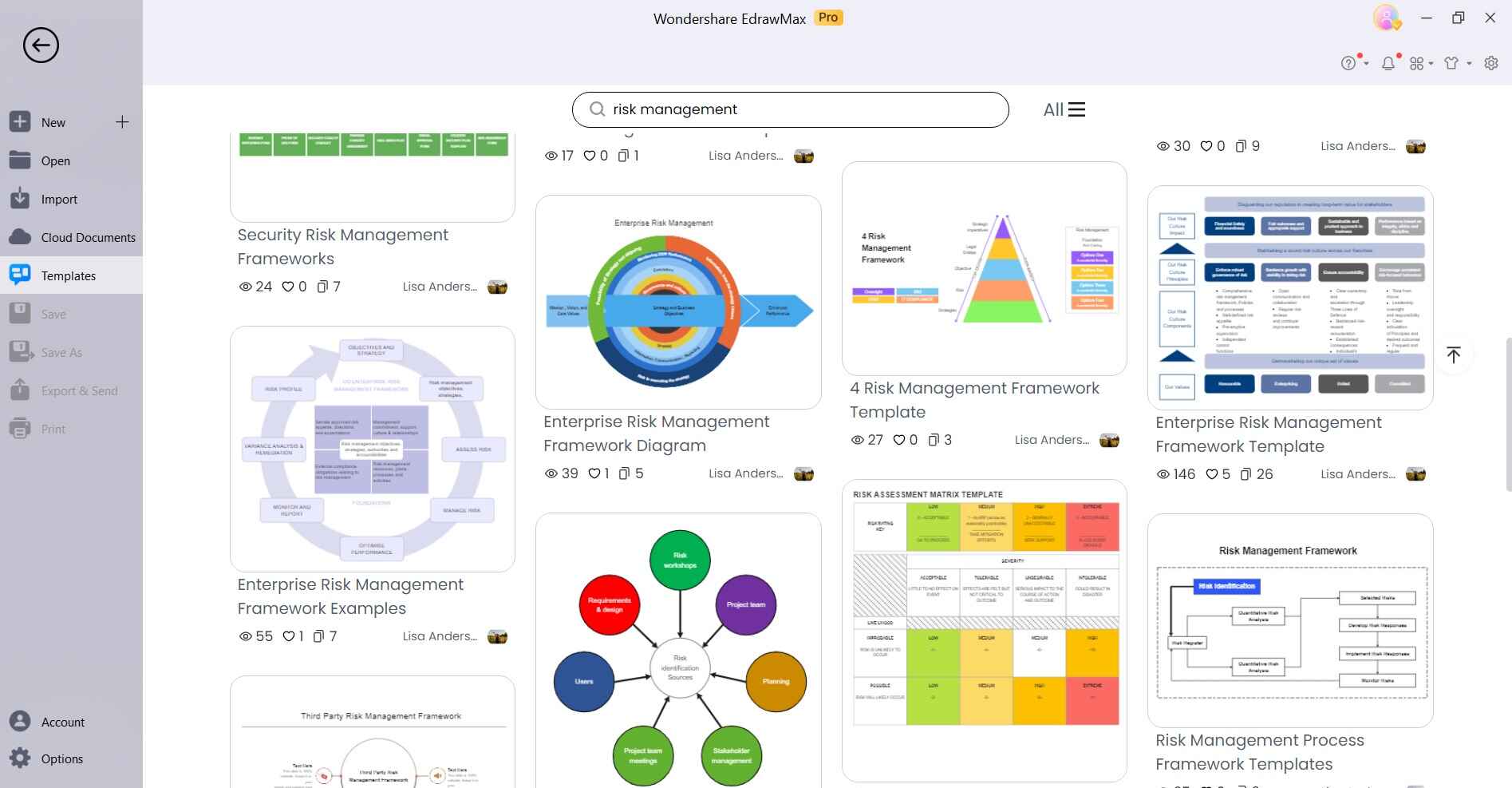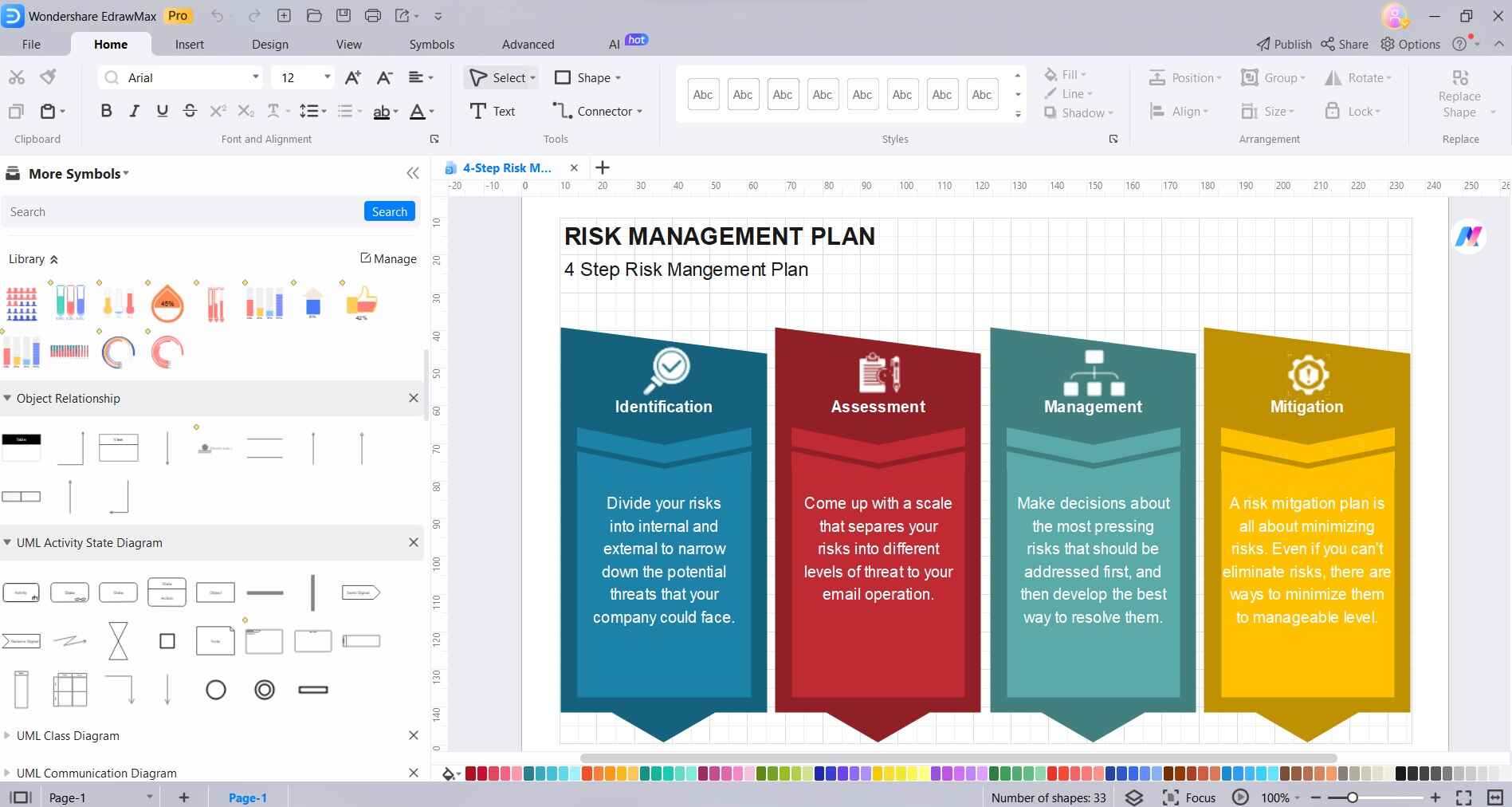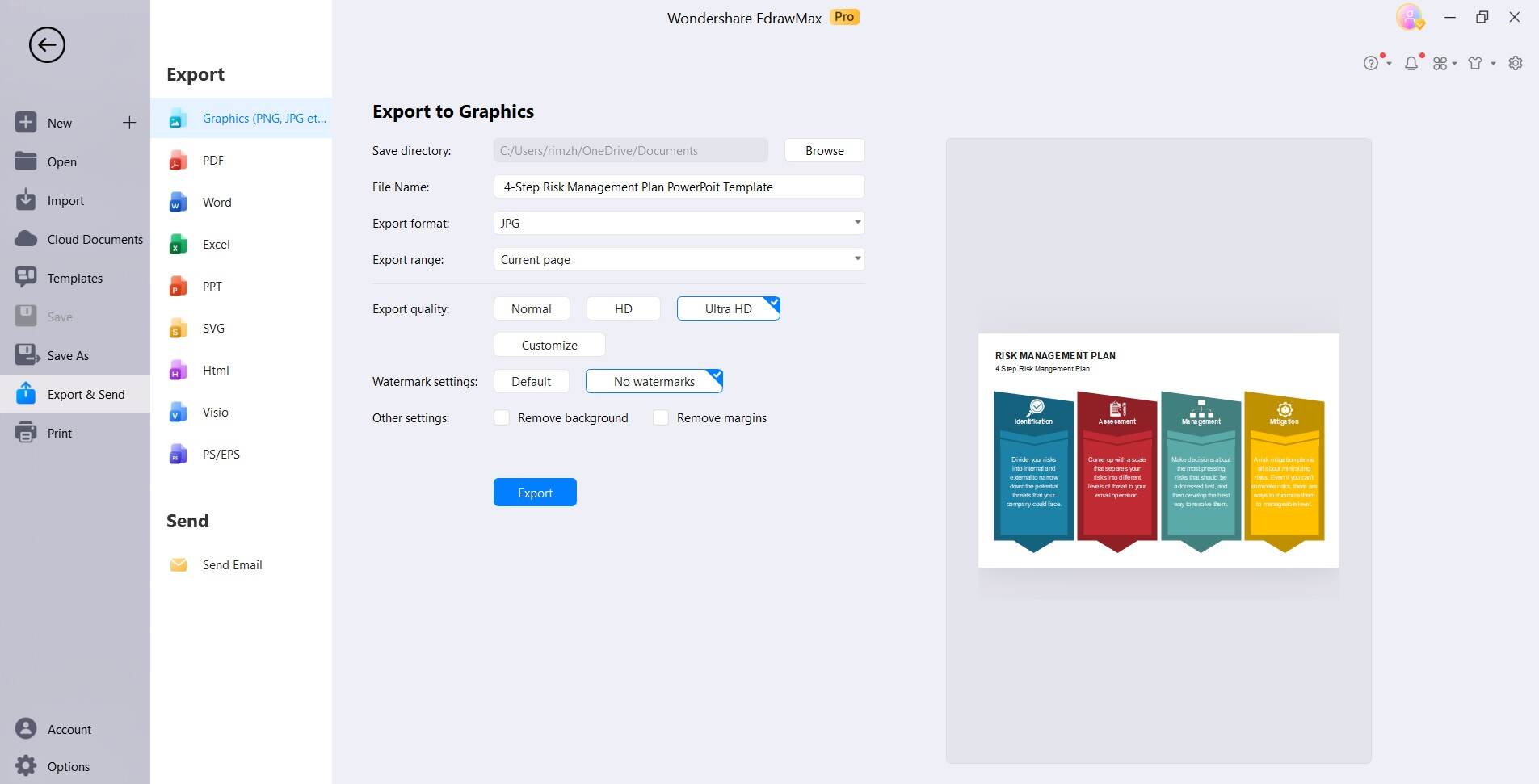In business, being ready for surprises is really important. This guide on business continuity and risk management will show you how to protect your company during tough times. Whether it's a natural disaster or economic downturn, we'll help you develop strategies to keep your business running smoothly.
With our guidance, you'll be ready to face challenges head-on and ensure your business thrives, no matter what comes your way.
In this article
Part 1: What is Business Continuity Risk Management

Business Continuity Risk Assessment is like a safety net for your company. It's all about making sure your business can keep going even when things get tough. This means planning for any unexpected events, like a big storm or a sudden economic dip.
By thinking ahead and having a solid plan in place, you're setting your business up for success, no matter what comes your way. Stick with us as we break it all down for you in simple, easy-to-follow steps.
Part 2: Difference Between Business Continuity and Risk Management
Business Continuity and Risk Management are like two sides of the same coin, but they serve different purposes.
Business Continuity is all about keeping your company going, even when things go wrong, by having plans and strategies in place for various crises. Risk Management, on the other hand, is about identifying potential problems and finding ways to prevent or minimize them.
In short, Business Continuity is your safety net for when trouble strikes, while Risk Management helps you avoid or reduce the chances of trouble in the first place.
Part 3: Understanding the Role of Business Continuity Planning in Risk Management
In the realm of risk management, Business Continuity Planning (BCP) plays a pivotal role in ensuring a company's resilience in the face of unexpected challenges. Here's why it's a critical component:
- Ensuring Operations Stay Afloat: Business Continuity Planning (BCP) safeguards critical operations during unforeseen events.
- Minimizing Disruption Impact: BCP identifies vulnerabilities and creates strategies to reduce the impact of disruptions.
- Preserving Reputation and Customer Trust: It helps maintain trust by demonstrating preparedness and responsiveness.
- Legal and Regulatory Compliance: BCP ensures adherence to legal and regulatory requirements, avoiding penalties.
- Enhancing Stakeholder Confidence: Stakeholders gain confidence knowing the business can weather unexpected challenges.
- Strategic Advantage: Effective BCP can be a competitive edge, as it showcases robust risk management capabilities.
Part 4: Create a Business Continuity Diagram Easily Using EdrawMax
Creating a Business Continuity Diagram with EdrawMax offers significant advantages, particularly in streamlining the process:
EdrawMax's user-friendly interface simplifies the creation of complex diagrams. Even those with limited technical expertise can quickly grasp the tool, reducing the learning curve.
The software provides a variety of ready-made templates designed for business continuity planning. These templates offer a solid foundation, requiring minimal customization and allowing you to start the planning process swiftly. The tool's compatibility with various file formats enables seamless integration with existing documents and presentations, making it effortless to incorporate your Business Continuity Diagram into your planning materials.
Here are the steps to create a risk assessment diagram using EdrawMax:
Step1
Launch EdrawMax and switch to the “Template” section. Choose the "Risk Assessment Diagram" template from the available options.

Step2
Drag and drop the elements onto the canvas, arranging them in a logical flow that represents your risk assessment process.

Step3
Use the left sidebar to access the library of shapes and elements related to risk assessment. These may include icons for risks, mitigations, likelihood, impact, etc.

Step4
Customize each element by double-clicking and editing text, adjusting colors, and resizing as needed.
Step5
Add labels, titles, and descriptions to each element to clearly convey its purpose and significance in the risk assessment process.

Step6
Once you're satisfied with the diagram, click on File> Export and Send to save your work in your preferred format (e.g., .eddx for EdrawMax files, or export as an image or PDF).

By following these steps, you can efficiently create a comprehensive Risk Assessment Diagram using EdrawMax. Remember to tailor the diagram to your specific risk assessment process and customize elements as necessary.
Part 5: Why is Business Continuity Risk Assessment Important
In today's dynamic business landscape, conducting a Business Continuity Risk Assessment is paramount. Here's why it holds such crucial importance:
- Identifies Vulnerabilities: Pinpoints potential weaknesses and vulnerabilities in business operations.
- Prioritizes Critical Functions: Helps prioritize essential functions, ensuring resources are allocated effectively.
- Reduces Downtime: Minimizes downtime during crises, enabling swift recovery and continuity of operations.
- Enhances Preparedness: Ensures teams are well-prepared, with clear roles and responsibilities in case of emergencies.
- Protects Reputation: Demonstrates a commitment to stakeholders' interests, preserving trust and reputation.
- Safeguards Long-Term Viability: Fosters resilience, positioning the business for long-term success in the face of challenges.
Conclusion
In wrapping up, it's clear that Business Continuity and Risk Management are crucial for a strong and adaptable business. Tools like EdrawMax make it easier to plan and visualize strategies. By being prepared, businesses not only stay afloat during tough times but also earn trust and stay competitive. With these practices in place, a business sets itself up for long-term success in any situation.
[没有发现file]



